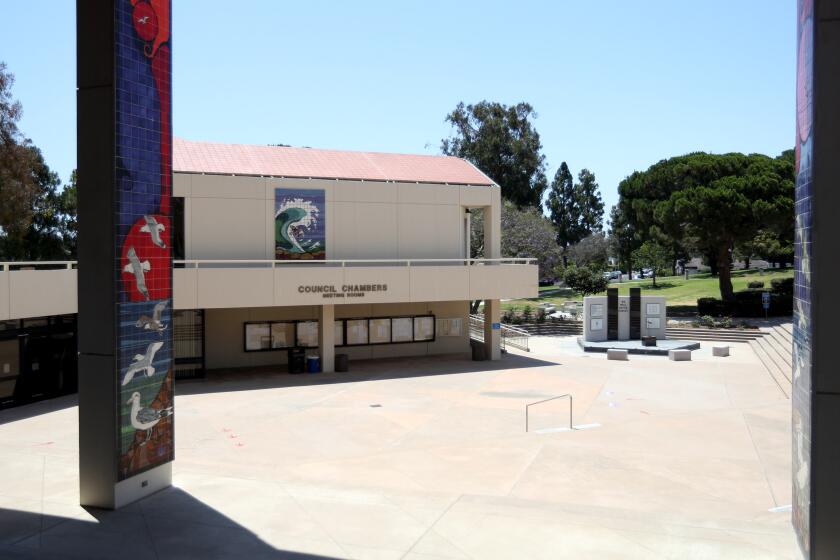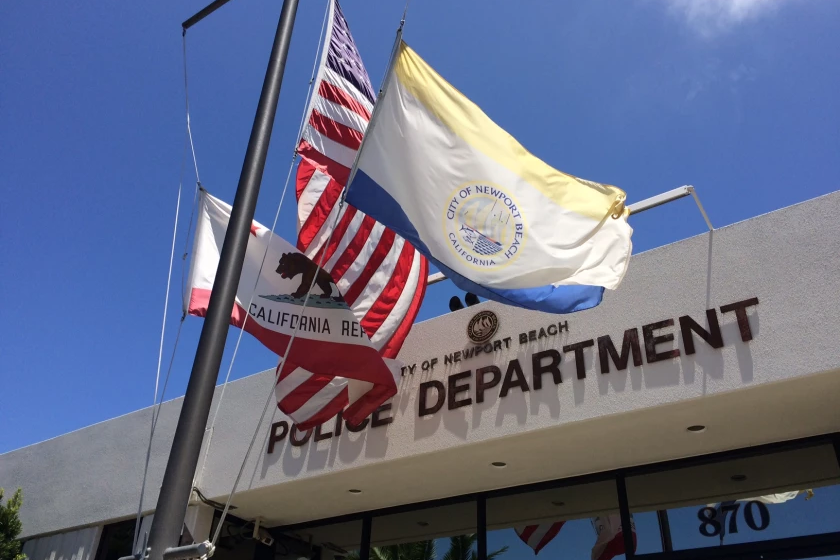Sewage bleach not reducing shoreline bacteria levels
- Share via
Paul Clinton
Three weeks after the Orange County Sanitation District began
chlorinating its waste water, bacteria levels along the shoreline
have not fallen, an agency spokeswoman said.
“It looks like unfortunately the disinfection is not a fix to the
shoreline contamination problems,” district spokeswoman Lisa Murphy
said. “It is proving to be effective in killing bacteria in the
treated waste water.... Truly, the waste water plume is not impacting
those bacteria levels.”
District managers have long maintained that the 234-million
gallons of sewage they dump into the ocean from an underwater outfall
pipe 4.2 miles out to sea every day does not contaminate the beach.
However, city leaders and environmentalists have long questioned
that contention, pushing for better treatment of the sewage. Bacteria
from the outfall pipe has been detected as close as a half-mile from
the Newport Beach shoreline.
During its chlorination process, the district collects samples of
the waste water before releasing it into the ocean, Murphy said.
Local environmental activists said they were skeptical of claims
that the outfall pipe should be let off the hook.
“I think that their conclusion is premature,” said Jack Skinner, a
Newport Beach environmentalist. “I don’t think we have enough
information yet.”
Bob Caustin, who founded Defend the Bay to combat pollution in
Back Bay, called it a “self-serving public relations ploy.”
Yet, a string of scientific studies over the past year have
pointed to other possible culprits -- including urban runoff, bird
droppings in the Santa Ana River and an RV park -- for recurring
bacterial “hot spots” in West Newport and at Huntington State Beach.
On Aug. 12, the district began a program to immediately bleach the
waste, dechlorinate it, then release it into the sea.
Starting the new treatment method has been smooth, Murphy said.
The waste water moving through the two treatment plants -- Plant No.
1 in Fountain Valley and Plant No. 2 in Huntington Beach -- moves
through several stages of chlorination.
It is treated with a dose of chlorine about three times stronger
than the everyday household variety; the district uses between 18,000
and 20,000 gallons per day.
Agency workers bleach the waste water for about two hours of
“contact time” and then add a dechlorination chemical to remove the
bleach before it enters the ocean.
Local water quality regulators ordered the district to begin the
chlorination process to help ease the worried minds of surfers and
swimmers heading to the beaches. They have been regularly monitoring
bacteria levels along the shoreline.
Ken Tyson, of the Santa Ana Regional Water Quality Control Board,
said he agreed with the district’s finding.
“It’s pretty definitive proof that it’s not the plume and never
has been [that’s contaminating the shoreline],” Tyson said. “It’s not
coming to shore.”
All the latest on Orange County from Orange County.
Get our free TimesOC newsletter.
You may occasionally receive promotional content from the Daily Pilot.






